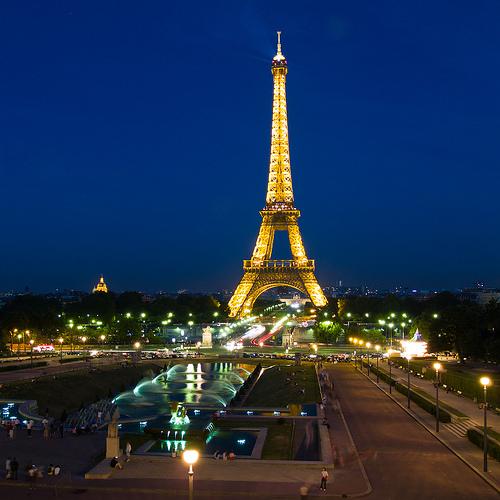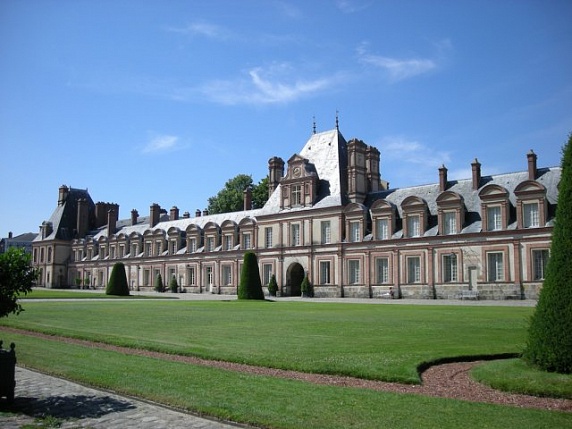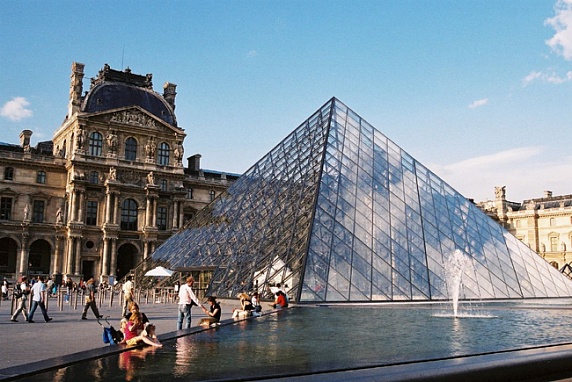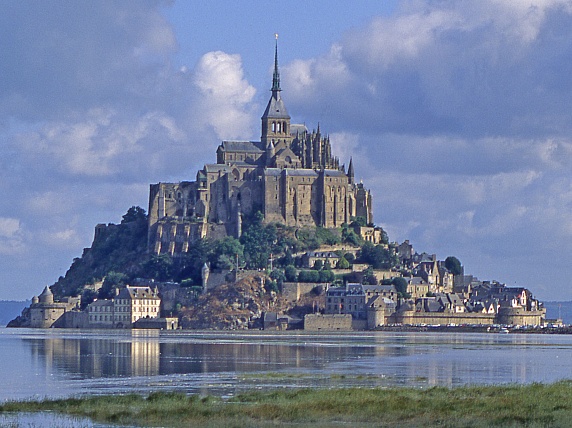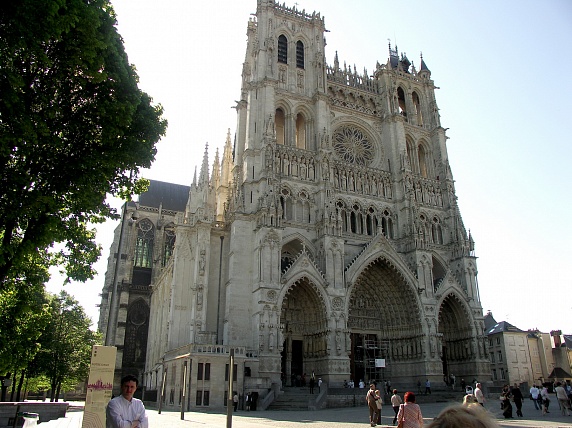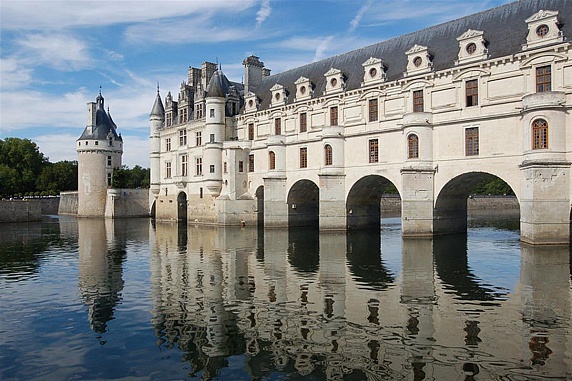 the French Republic
the French Republic
French colonial empire
The French colonial empire began the annexation of its overseas territories during the Age of Discovery. As France competed with Great Britain and other powers, its empire collapsed just before the Napoleonic Wars. In 1815, France began developing its second colonial empire, which became the French Union in 1946 and the French Community in 1958.
The first French colonial empire
France first showed interest in conquering new lands in the 16th century. Along with Portugal, Spain and England, France began developing new sea routes from Europe to India and East Asia. Throughout the first half of the 16th century, there was a gold rush in the Old World, with explorers searching for new territories rich in gold, silver, ivory, furs and spices. To justify their overseas expeditions, the French crown declared it a Civilising Mission. This mission included racism and the belief in white supremacy, as well as the idea that non-European societies were barbaric and needed European re-education. Racist thinkers like Arthur de Gobineau falsely claimed that people of colour were biologically inferior to white people.
In 1534, navigator Jacques Cartier embarked on several sea expeditions to the New World, which led to the discovery of Canada. The French crown named this newfound land New France and claimed it as its own. Colonial expansion became a significant factor in France's rise under Henry IV and Louis XIII.
During the 17th century, France founded colonies in North America, such as Acadia (1603), Quebec (1608), Trois-Rivières (1634), Ville-Marie (Montreal) (1642), and other settlements in the St Lawrence River Valley and the Great Lakes region. France also attempted to colonise Guiana and the Lesser Antilles, Martinique (1635), the northern part of the island of St Martin (1648), and Guadeloupe and the island of Grenada (1674). In 1678, France conquered the island of Tobago, and by the Treaty of Ryswick in 1697, the western part of the island of Saint-Dominique was recognised as French territory.
France actively pursued colonisation in West Africa, starting in 1637 with the development of the Gulf of Guinea coast. In the mid-18th century, French colonists began moving further into Africa. Additionally, France aimed to establish strongholds on islands along the sea routes to India. In 1638, the French occupied the island of Reunion, and between 1715 and 1722, they captured the island of Ile-de-France (now the Republic of Mauritius). In the first half of the 18th century, France established its strongholds on the coast of India, including Pondicherry, Karikal, Mahe, Yanaon (now Yanam) and Chandernagore (now Chandannagar), collectively known as French India.
Unlike the British Empire, which relied on local elites for administration, France chose direct administration through its governors and intendants from the start. Food plantations in Latin America, Africa and Asia were established and maintained using slave labour, with the supply of slaves relying on the African slave trade. Throughout the 17th to 19th centuries, France was driven by its desire to access and control the African slave trade. Poor living conditions, hunger and disease made slave labour in French colonies particularly hazardous.
The French revolution of the 18th century brought significant changes to French colonial policy. The Declaration of the Rights and Liberties of Man and of the Citizen (1789) proclaimed the abolition of slavery in the colonies and the prohibition of the slave trade. This provision was later made into law by a government decree on February 4, 1794. However, in 1802, Napoleon I restored slavery in the colonies. In May 1803, fearing British occupation, Bonaparte authorised the cession of Louisiana to the United States for 80 million francs. One of the consequences of the revolution in France was the Haitian Slave Revolution of 1791-1803 on the island of Saint-Dominique, which led to the victory of the revolutionists and the declaration of independence of the Republic of Haiti.
Under the Paris Peace Treaty of 1763, which ended France's unsuccessful Seven Years' War of 1756-1763, all French territories in North and Central America were ceded to Great Britain. The Treaty of Paris of 1814 established a new distribution of colonies, which was further revised in the final act of the Congress of Vienna of 1814-1815 and in the Second Treaty of Paris of 1815. By 1815, the few remaining French overseas possessions had fewer than one million inhabitants, compared to the 35 million in the early 18th century. With the end of the Napoleonic wars and the fall of the Bonaparte regime, the French colonial empire effectively ceased to exist.
The second French colonial empire
In the 19th century, France resumed its active colonial policy to compensate for its weakening positions in the Old World after its defeat in the Napoleonic wars. This was also driven by the needs of developing French capitalism, which required new raw material resources. From 1830-1847, France conquered Algeria and part of Morocco. In 1842, the French began developing the Ivory Coast (now Côte d'Ivoire). In 1847, Tahiti was recognised as a French sphere of influence.
In the early 1860s, France prepared to subjugate Tunisia and Egypt, where it received a concession for the construction of the Suez Canal. Napoleon III attempted to take control of Syria and Lebanon but faced resistance not only from the local population but also from Turkey and Great Britain. At the same time, France sought to subjugate Senegal and Madagascar. France was also very active in the Far East and Indochina during this time, bringing Cochinchina (South Vietnam) under its control in 1863 and establishing a protectorate over Cambodia in 1867.
After its crushing defeat in the Franco-Prussian War of 1870-1871, France once again focused on the policy of colonial conquest, aiming to complete the division of land between the great powers in a timely manner. Its efforts were concentrated in two main areas: Africa and Southeast Asia. In 1881, France established its protectorate over Tunisia and in 1883 over Niger. The colony of French Sudan was established in 1892. On June 14, 1898, France and Britain signed the Franco-British Convention, which delimited French and British possessions in West Africa. By the end of the 19th century, France had consolidated its possessions around Lake Chad, including Algeria, West Africa and the Congo Basin. It also formed the colony of French Coast of Somalia. In 1896, the island of Madagascar and its dependencies were recognised as a French colony. By the early 1890s, France had finally established itself throughout Vietnam (Cochinchina, Annam, and Tonkin) and by 1893 had subjugated Laos. Its new possessions in Southeast Asia were united as French Indochina.
Its rivalry with Germany over Morocco resulted in the establishment of the French protectorate with British support in 1912, although the final conquest of Moroccan territories was not completed until 1934. The French established a particularly discriminatory infrastructure there, treating Moroccans as second-class citizens. Land was much more expensive for the natives than for French settlers, and natives were not even allowed to buy land from the French. The colony was also obligated to import all goods exclusively from France. The subjugation of Morocco and the establishment of a joint administration with Great Britain over the New Hebrides were the last French colonial acquisitions before World War I.
After the end of the war, the French colonial empire expanded at the expense of territories formerly possessed by Germany and the Ottoman Empire. Syria and Lebanon became French mandate territories, while Togo and Cameroon were divided between Britain and France. By the beginning of World War II, the French Empire reached its peak, with a territory covering 12.3 million square kilometres and a population of 68.7 million. The colonies supplied France with raw materials such as rubber, anthracite, coal, timber, and cotton, and also served as a market for French-made products.
Collapse of the empire
The decolonisation of French overseas territories began during World War II. After France's defeat in 1940 and subsequent occupation, their ties to France weakened. In many French colonies, the Resistance Movement emerged, led by General de Gaulle, the leader of the Free France movement. The colonies significantly bolstered the army of the Provisional Government of the French Republic and played a crucial role in its liberation and post-war economic recovery.
Some colonies had already sought independence during the war. Syria and Lebanon were the first to do so in 1946. Paris faced the urgent task of implementing profound changes in the colonial system. The 1946 reform granted the population of France's overseas territories French citizenship and equal rights to the residents of France. Under the new Constitution, the Fourth Republic and the former colonies formed a single French Union. However, decolonisation did not halt; in fact, it gained momentum.
From 1951 to 1954, France relinquished five of its possessions in Asia to the Republic of India. In 1954, as a result of the Indochina War (1946-1954), Vietnam, Laos, and Cambodia left the French Union. Morocco and Tunisia achieved full independence in 1956. From the end of 1954 until 1962, a fierce anti-colonial war raged in Algeria, culminating in Paris recognising Algeria's independence in 1962. This event symbolised the actual collapse of the second French colonial empire. Even before the end of the Algerian war, President de Gaulle initiated the preventive decolonisation of 12 former French possessions in Africa, including Madagascar in 1960. In the following years, the Republic of Djibouti (formerly French Somali Coast) and the Republic of Vanuatu (formerly the French-British condominium of the New Hebrides) achieved independence in 1977 and 1980, respectively.
Through the Francophonie programme, implemented since 1970, France has continued to exert a significant cultural influence in most of the countries that were once part of the French colonial empire. Its constituent parts have been transformed into overseas departments and regions, territories and communities: Guadeloupe, Guiana, Martinique, Mayotte, Reunion, Saint-Barthélemy, Saint Martin, Saint-Pierre and Miquelon, French Polynesia, Wallis and Futuna. New Caledonia is a special administrative-territorial entity, and there is a strong sentiment among the indigenous population (the Kanak people) in favour of full independence from France. French Southern and Antarctic Lands, as well as Clipperton Island, enjoy the status of overseas state private property of France. As of 2021, their combined population accounted for 2.8 million people (four percent of France's population).





